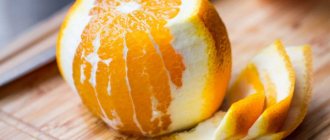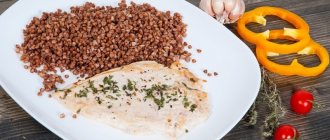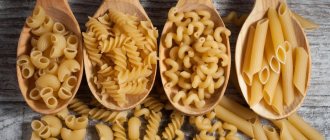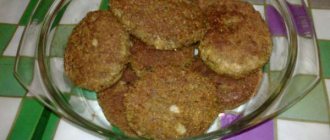For people who are overweight and have a sick stomach, the question becomes especially relevant: is it possible to lose weight with gastritis? The habit of eating deliciously and plentifully results not only in extra pounds, but also in inflammation of the gastric mucosa. Fasting to lose weight with any form of gastritis is harmful and dangerous. But choosing the right diet always guarantees success.
What is a diet for chronic gastritis?
Gastritis manifests itself with a whole set of symptoms:
- nausea and vomiting;
- sharp or aching pain in the upper abdomen;
- swelling;
- frequent belching;
- problems with stool;
- lack of appetite and even weight loss.
Along with drug treatment, it is very important to choose a diet. When diagnosing a disease, many are interested in the question: “What diet is suitable for chronic gastritis?” As a rule, a gastroenterologist decides to prescribe a diet on an individual basis, taking into account the characteristics of the disease, symptoms, the patient’s condition, as well as test results (in particular, the level of acidity of gastric juice).
The diet for chronic gastritis is primarily aimed at normalizing the digestive system and consists of frequent consumption of easily digestible food. It is better to steam, bake, boil and stew dishes. Food should be ground to a soft consistency. You should not eat cold or hot dishes; the best option is slightly warm. Treatment of chronic gastritis without regular adherence to a competent diet is almost impossible, so the issue of proper nutrition should be approached with maximum responsibility.
General recommendations for prescribing a diet for chronic gastritis include limiting spicy, salty and coarse foods, and avoiding fatty, smoked and fried foods. It is important that the patient’s body receives all the necessary microelements and nutrients, so the menu must be composed of light and, at the same time, nutritious dishes. Typically, the diet for chronic gastritis lasts 1-1.5 months - until the condition is completely improved. However, some rules of rational nutrition must be followed throughout life: do not overeat, chew food well, give up alcohol and smoking, as well as fast food, carbonated drinks and other harmful foods.
The diet for chronic gastritis is based on the principle of fractional meals (meals 4-5 times a day). Dishes must be freshly prepared and made from natural ingredients. To quickly restore digestive system function, you need to include protein foods in your diet, as well as vitamins E, B12 and B6 (found in a variety of grains, dairy products, lean meats and fish, eggs and dark green leafy vegetables).
In case of chronic gastritis, it is necessary to remember the use of fresh fruits, berries and vegetables, which help to enhance the processes of gastric secretion, the secretion of gastric juice and increased enzyme activity. Assimilation of meat and fish occurs much faster if they are eaten in combination with vegetables. Among the spices, it is allowed to use parsley, celery, and dill in crushed form.
General recommendations for catering
An inflamed pancreas, like a problematic stomach, needs a gentle diet. Therefore, the general principles of organizing the diet are the same for both pancreatitis and gastritis:
- Food portions should be small (up to 150 grams).
- It is better to eat often, but little, without burdening the digestive organs with prolonged work. The most rational solution is to switch to 5 meals a day (breakfast - 2nd breakfast - lunch - afternoon snack - dinner).
- All products are crushed during the cooking process and chewed thoroughly during eating.
- Food should not be cold. All dishes and drinks are better absorbed when warm.
- Products should not be dry, hard or have sharp edges. Rusks or drying should be soaked in broth or tea.
- The diet is strictly on an hourly basis. The stomach, getting used to a certain regime, begins to secrete juice in advance for better absorption of foods.
2 hours before bedtime, food is completely excluded. You need to give the gastrointestinal tract time to stop working and have a good rest overnight. It is not recommended to overload the body immediately upon waking up or to snack on the go. You need to eat calmly and slowly.
Do's and Don'ts for Chronic Gastritis
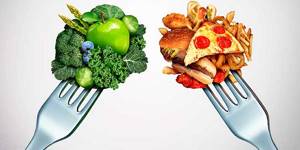
The diet may include:
- yesterday's or dried bread;
- low-fat cookies;
- vegetable and milk soups;
- porridge (puree, slimy);
- dairy and fermented milk products;
- dishes made from lean meat or fish;
- oil (in small quantities);
- refined vegetable oils (olive, sunflower, etc.);
- meatballs, soufflé, cutlets, zrazy made from lean meat, poultry and low-fat fish;
- vegetable stew;
- puree soup prepared with low-fat broth;
- steamed omelettes;
- fruit mousses and desserts;
- jelly and marmalade;
- Drinks include weak tea (including milk), clean water, rosehip decoction, mineral water, juices, dried fruit compotes.
The following are excluded from the diet:
- rich meat, fish or mushroom soups (instead, light broth or milk soup, which will help neutralize excess acid in the stomach);
- fatty foods, smoked foods;
- alcoholic drinks;
- strong coffee, cocoa and tea;
- some fresh vegetables: cucumbers, peas and beans, cabbage, radishes and turnips, onions and sorrel;
- mushrooms;
- dishes and foods that are slowly digested in the stomach: rye bread, pancakes, pies;
- fried and hard-boiled eggs;
- any canned food;
- spices;
- cheese.
Taboo
Mentioned above are spices and salt that should be avoided. But it is very difficult to give up salt completely; it is important that the amount you take does not exceed half a teaspoon per day. Garlic and onions as foods are also best limited as much as possible.
But if you have gastritis with a high level of acidity, you should absolutely not eat fried foods, jellied meat, meat, fish and mushroom broths, and sausages. This disease also requires quitting smoking and alcohol. If in the case of salt you just need to limit the amount so as not to cause negative consequences, the latter will not keep you waiting long when using the above prohibited items. They should be completely excluded from the menu in case of exacerbation of gastritis with high acidity.
Diet for chronic gastritis
The choice of diet will depend on the degree of development of the disease, the patient’s condition and individual characteristics. When the condition worsens, the patient adheres to a strict diet; after treatment, during remission, the menu expands significantly. Regardless of the stage of chronic gastritis, food should be complete and include vitamins, microelements, and nutrients that are necessary for recovery.
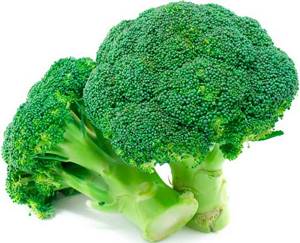
Typically, for chronic gastritis, tables No. 1, No. 2, No. 15 are often prescribed, depending on the course of the inflammatory process. Thus, during an exacerbation of the disease, table No. 1 is used, which boils down to eating exclusively pureed foods, boiled or steamed. This strict dietary treatment can last up to 2 months. During the process of remission, a transition occurs to table No. 2 (extended menu), then to table No. 15.
Table No. 2 is prescribed when the stage of exacerbation of chronic gastritis passes. It is allowed to eat soups prepared with meat or fish broth, light borscht and pickle soup. You can add doctor's sausage, sauces from meat broths, berries or soft fruits to your diet. Prohibited foods include mushrooms and raw vegetables.
Table No. 15 significantly expands the menu and may include the consumption of rye bread, raw vegetables and fruits and other products. However, fatty foods, smoked foods, canned food, vegetables (for example, turnips, radishes and radishes) are excluded, as they irritate the gastric mucosa.
A wide range of products that are allowed for chronic gastritis allows you to create a varied diet and make it tasty and enjoyable.
Relevance of the problem
Why does a person get gastritis? In fact, there are many factors in the development of this disease. But dietary errors make a big contribution here. For example, rare but plentiful meals. Also eating unhealthy food, alcohol, taking certain medications. If you suffer from gastritis, then first of all adjust your diet and nutrition. The diet for gastritis of the stomach is not characterized by sharp menu restrictions, so you should not worry about the fact that you will have to starve. Another question is how long you need to follow a diet for gastritis. But more on that a little later.
What diet for gastritis of the stomach would be recommended for a patient? For now, we are talking about chronic gastritis, when there are no pronounced symptoms of the disease. So, all the most important nutrients must be present in food in full: proteins, fats and carbohydrates, as well as vitamins and minerals. Secondly, you should eat often, at short intervals. Moreover, the amount of food in one serving should fit into a glass. About three hours before bedtime, it is better to fast and, if desired, treat yourself to a glass of jelly or warm milk. Try to chew your food well. Don't eat food that is too hot or too cold. Remember that a diet for gastritis of the stomach involves a diet in which food “spares” the stomach both in temperature and in its composition.
Menu for chronic gastritis for the day
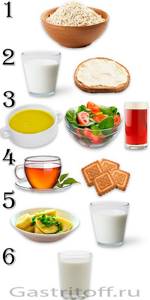
Breakfast It is advisable not to strain the digestive system with large quantities of food. It is enough to eat a small portion of porridge (oatmeal or semolina) for breakfast. You can add pieces of steamed meat or fish. Other options: protein omelet, hard-boiled egg, vegetable puree, lean fish, baked or boiled. For drinks, it is best to choose warm, weak tea with lemon. Don't start your day with a cup of cocoa or coffee, as these drinks can irritate the stomach lining.
Second breakfast (after 2 hours) As a snack, you can drink a glass of compote or milk, wild rose decoction or jelly. A sandwich of dried bread or buns with butter (in small quantities) with doctor's sausage is allowed.
Dinner
- first course - vegetable or milk soup (including with the addition of cereals), cabbage soup;
- second - a vegetable salad or meat dish with a side dish (pasta, mashed potatoes, boiled carrots or beets);
- drink - compote, herbal decoction or jelly.
As a dessert, you can eat a skinless baked apple in sugar syrup, curd soufflé, fruit pudding or berry mousse.
Afternoon snack A glass of tea (milk, low-fat kefir, dried fruit compote, berry jelly) with cookies, crackers, a sandwich or a dry bun.
Dinner You can cook boiled potatoes, baked fish, semolina porridge, or any other porridge, cottage cheese with milk, or an omelet. For drinks, weak tea or warm milk is preferable.
Before going to bed, drink a glass of warm milk with honey or kefir.
The menu for chronic gastritis can be varied: vegetable salads, boiled fish, puree soups, meat soufflés, lazy dumplings, protein omelettes, dietary sausages, various cereals and fruit and berry jelly. The main thing is that the food is easily digestible and does not contain ingredients that irritate the gastric mucosa.
TUESDAY

Breakfast: oatmeal with milk with raisins and apples (exclude spices, raisins as tolerated)
Lunch: chicken noodle soup; baked apples with cottage cheese
Afternoon snack: fruit cocktail with kefir and cottage cheese (I recommend replacing canned apricots with fresh or peaches)
Dinner: fish balls like in kindergarten + mashed potatoes (excluding lemon juice)
Nutritionist's comment:Everyone knows that porridge is an ideal breakfast; it contains complex carbohydrates that keep you full for a long time, and pumpkin will enrich the dish with vitamin A. I recommend that people suffering from digestive system diseases regularly include soup in their diet. It is easily digestible, satiating and helps prepare the digestive system for the next meal. |
Diet for exacerbation of chronic gastritis

Most often, chronic gastritis is asymptomatic and manifests itself in the form of exacerbations only against the background of weakened immunity, damage to the gastric mucosa by Helicobacter, malnutrition, frequent stress and the development of other diseases of the internal organs. The exacerbation process manifests itself in the form of disruption of the main function of the stomach - digestion, as well as irritation of its inflamed mucous membrane.
When following a diet with exacerbation of chronic gastritis, split meals in small portions from 5 to 8 times a day are recommended; the calorie content of food should be 2800-3000 kcal per day. Exacerbation of gastritis was observed in patients who reduced their daily fluid intake - that is, less than 1.5 liters per day. In modern medical practice, patients during an exacerbation of chronic gastritis in the first days of treatment are prescribed table No. 1a, then - table No. 1b, and in the process of reducing the symptoms of the disease (about a week) - table No. 1.
As for the menu, it should consist of easily digestible products and dishes.
What is allowed during exacerbation of chronic gastritis
- lean meats, poultry, fish (boiled, stewed and baked);
- soups;
- steam omelettes;
- dairy products;
- dry biscuits and crackers;
- unsweetened drinks;
- natural juices, weak tea with lemon, dried fruit compotes;
- fruit jelly.
It is advisable that the food is well chopped. When making soups, it is important that they have a slimy consistency. Boiled vegetables are best consumed as a puree. Raw foods are excluded from the diet (grains, fruits and vegetables, legumes).
It is best to give preference to easily digestible dishes: for example, boiled meat or fish, as well as steamed cutlets, zraza, meatballs, etc. You can use egg whites, milk and cream, low-fat cheese, low-fat yogurt and kefir. From fats - vegetable products in the form of olive or refined sunflower oil, which must be used when preparing dishes. It is beneficial to consume up to 60 g of oil daily as it speeds up the healing of the gastric mucosa. It is necessary to remember about the carbohydrates contained in porridges - semolina, rice, buckwheat. Baby formula and cereals are allowed, as well as mashed potatoes from boiled vegetables and soft fruits.
What not to do during an exacerbation of chronic gastritis

- bakery products, fresh pastries;
- fatty foods, smoked products, sausages and marinades;
- spicy and salty foods;
- fried foods;
- cold drinks;
- alcohol;
- ice cream;
- sour foods;
- any spices.
Example menu for exacerbation of chronic gastritis
- First breakfast. Any slimy porridge or hard-boiled eggs, a glass of weak tea, milk or compote.
- Lunch. Fruit jelly or marmalade.
- Dinner. Any puree soup, for the main course - porridge or mashed potatoes with steamed meat or fish gravy, crackers, tea with milk.
- Afternoon snack. Cookies (biscuits) and rosehip decoction with honey.
- Dinner. Semolina porridge with butter (50 g) or with meat soufflé, fruit jelly, compote.
- Before bed: a glass of milk.
Fully or partially limited products
The gastrodiet provides an exception:
- Any broths, fried and spicy foods, animal fats, fatty fish and meat, smoked meats, any snacks, pickled and pickled vegetables, bird skin, fish, cartilage.
- Raw berries.
- Millet, barley, pearl barley, corn cereals.
- Fermented milk drinks, sour cream.
- Mushrooms (as a difficult-to-digest product), onions, garlic, radishes, radishes, legumes, white cabbage.
- Strong tea, coffee, carbonated drinks, kvass, undiluted fruit juices from sour fruits.
- Sauces, vinegar, ketchup, mayonnaise, pepper and spices.
Table of prohibited products
| Proteins, g | Fats, g | Carbohydrates, g | Calories, kcal | |
Vegetables and greens | ||||
| vegetables legumes | 9,1 | 1,6 | 27,0 | 168 |
| swede | 1,2 | 0,1 | 7,7 | 37 |
| cabbage | 1,8 | 0,1 | 4,7 | 27 |
| sauerkraut | 1,8 | 0,1 | 4,4 | 19 |
| green onion | 1,3 | 0,0 | 4,6 | 19 |
| bulb onions | 1,4 | 0,0 | 10,4 | 41 |
| cucumbers | 0,8 | 0,1 | 2,8 | 15 |
| canned cucumbers | 2,8 | 0,0 | 1,3 | 16 |
| white radish | 1,4 | 0,0 | 4,1 | 21 |
| turnip | 1,5 | 0,1 | 6,2 | 30 |
| canned tomatoes | 1,1 | 0,1 | 3,5 | 20 |
| horseradish | 3,2 | 0,4 | 10,5 | 56 |
| spinach | 2,9 | 0,3 | 2,0 | 22 |
| sorrel | 1,5 | 0,3 | 2,9 | 19 |
Mushrooms | ||||
| mushrooms | 3,5 | 2,0 | 2,5 | 30 |
Cereals and porridges | ||||
| corn grits | 8,3 | 1,2 | 75,0 | 337 |
| pearl barley | 9,3 | 1,1 | 73,7 | 320 |
| millet cereal | 11,5 | 3,3 | 69,3 | 348 |
| barley grits | 10,4 | 1,3 | 66,3 | 324 |
Confectionery | ||||
| candies | 4,3 | 19,8 | 67,5 | 453 |
Ice cream | ||||
| ice cream | 3,7 | 6,9 | 22,1 | 189 |
Cakes | ||||
| cake | 4,4 | 23,4 | 45,2 | 407 |
Raw materials and seasonings | ||||
| mustard | 5,7 | 6,4 | 22,0 | 162 |
| ginger | 1,8 | 0,8 | 15,8 | 80 |
| ketchup | 1,8 | 1,0 | 22,2 | 93 |
| mayonnaise | 2,4 | 67,0 | 3,9 | 627 |
| ground black pepper | 10,4 | 3,3 | 38,7 | 251 |
| chilli | 2,0 | 0,2 | 9,5 | 40 |
Dairy | ||||
| kefir | 3,4 | 2,0 | 4,7 | 51 |
| sour cream | 2,8 | 20,0 | 3,2 | 206 |
| curdled milk | 2,9 | 2,5 | 4,1 | 53 |
Meat products | ||||
| pork | 16,0 | 21,6 | 0,0 | 259 |
| ham | 22,6 | 20,9 | 0,0 | 279 |
Sausages | ||||
| dry-cured sausage | 24,1 | 38,3 | 1,0 | 455 |
| sausages | 10,1 | 31,6 | 1,9 | 332 |
| sausages | 12,3 | 25,3 | 0,0 | 277 |
Bird | ||||
| smoked chicken | 27,5 | 8,2 | 0,0 | 184 |
| duck | 16,5 | 61,2 | 0,0 | 346 |
| smoked duck | 19,0 | 28,4 | 0,0 | 337 |
| goose | 16,1 | 33,3 | 0,0 | 364 |
Fish and seafood | ||||
| dried fish | 17,5 | 4,6 | 0,0 | 139 |
| smoked fish | 26,8 | 9,9 | 0,0 | 196 |
| canned fish | 17,5 | 2,0 | 0,0 | 88 |
Oils and fats | ||||
| animal fat | 0,0 | 99,7 | 0,0 | 897 |
| cooking fat | 0,0 | 99,7 | 0,0 | 897 |
Non-alcoholic drinks | ||||
| bread kvass | 0,2 | 0,0 | 5,2 | 27 |
| black tea | 20,0 | 5,1 | 6,9 | 152 |
| * data is per 100 g of product | ||||
Dietary recipes for chronic gastritis
Lazy dumplings
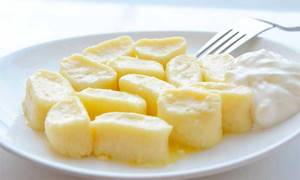
Rub a package of low-fat cottage cheese through a sieve, add 1 tbsp. a spoonful of wheat flour, a teaspoon of sugar, an egg and mix thoroughly. Make sausage from the resulting mass and cut it into small pieces. Place dumplings in boiling water and cook for 5 minutes. Serve with a small amount of low-fat sour cream.
Beef broth and cauliflower puree soup

Peel 250 g of cauliflower and cook in beef broth (300 g), then rub through a sieve. Fry the flour with vegetable oil (5 g), dilute with broth, then add to the mashed cauliflower and pour everything into the broth. Cream (50 g): mix 1 egg yolk and 5 g of vegetable oil. Bring the soup to a boil, season with cream. Add bread crumbs (20 g) before serving.
Liquid semolina with milk and fruits
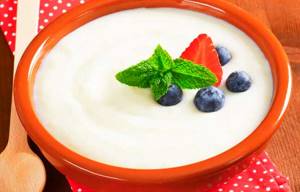
Boil 1.5 cups of milk, then carefully add semolina (1 tablespoon) into it and cook for 20 minutes, stirring constantly. At the end add 1 teaspoon of butter and the same amount of sugar. You can add berry puree to slightly cooled soup.
Rice soup with dried fruits
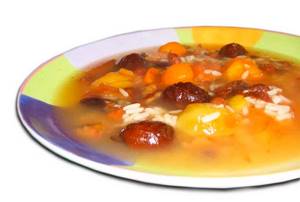
Rinse 100 g of dried fruits thoroughly, then add hot water (450 g) and boil. Add 20 g of sugar and leave in a covered pan for 1 hour. Cook the rice separately (10 g), rinse it with chilled boiled water and add to the fruit broth.
Pike perch in milk sauce
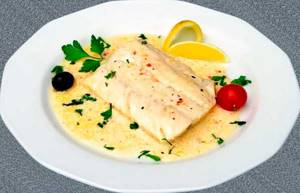
Peel and bone pike perch (250 g), cut into pieces, then steam and pour over milk sauce before serving. For milk sauce: 50 g milk, 5 g flour, half a boiled egg and 20 g butter. Part of the milk is brought to a boil and poured into flour, previously diluted with the rest of the milk, then a crushed egg, salt and butter are added.
Steamed meatballs

Meat (250 g chicken or 200 g beef) must be minced, then add bread (10 g) soaked in milk, and mince again. Pour a little water or milk into the minced meat, add salt, stir and form small balls that should be steamed.
Baked apples with cottage cheese
Required:
- low-fat cottage cheese (100 grams);
- low-fat sour cream (2 tablespoons);
- medium-sized apples (6 pieces);
- sugar (2 tablespoons);
- raisins if desired.
The first step is to prepare the filling for your future breakfast. To do this, mash the cottage cheese with a fork, add sugar and, if necessary, sour cream. The final touch to preparing a delicious curd mass will be adding raisins to it, previously steamed in boiling water.
The apples are washed well, the centers are cut out of them, which are then filled with filling. The stuffed apples are placed on a fireproof plate and a little water is poured into the bottom. Breakfast is baked in the oven at 180 degrees for 30 minutes.
Salads
Apple-carrot. Grate boiled (or fresh) carrots and a fresh apple on a fine grater. Place the resulting mass in a salad bowl. Dilute a tablespoon of honey with two tablespoons of boiled water and add to the salad. To add variety, you can add nuts to the salad bowl.
The vinaigrette. Take one carrot and beetroot, two potatoes, a can of canned peas and dill. Boil the vegetables and chop them, mix in a salad bowl. Add chopped herbs and peas there. Season the resulting salad with vegetable oil and a little salt.
Cucumber-egg. Wash and chop the parsley. Wash the cucumber and peel the egg. Cut the vegetables into cubes, combine with herbs, mix and add a little salt.
Olivie. Boil potatoes, carrots, eggs and chicken. Cut all this, as well as fresh cucumber into cubes. The cucumber must be used fresh. If the peel is hard and bitter, it is better to cut it off first. Mix all the crushed products in one container and season with low-fat sour cream or yogurt.




